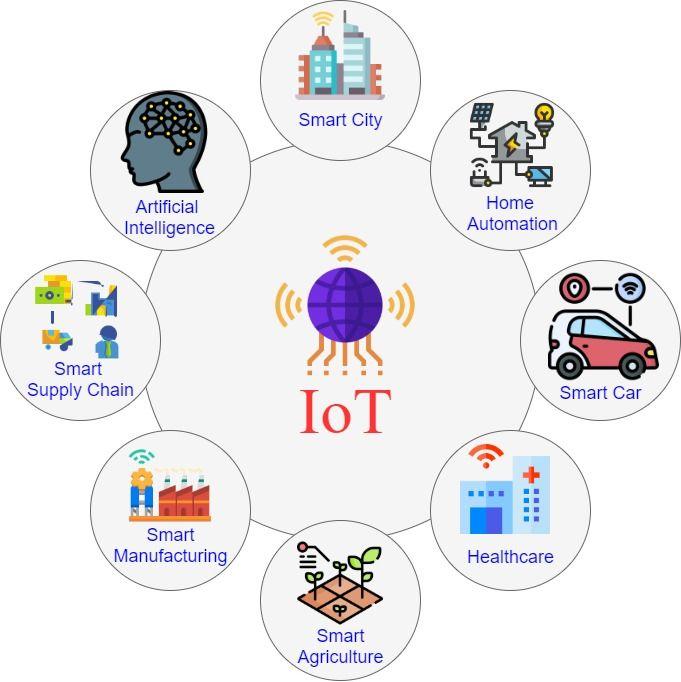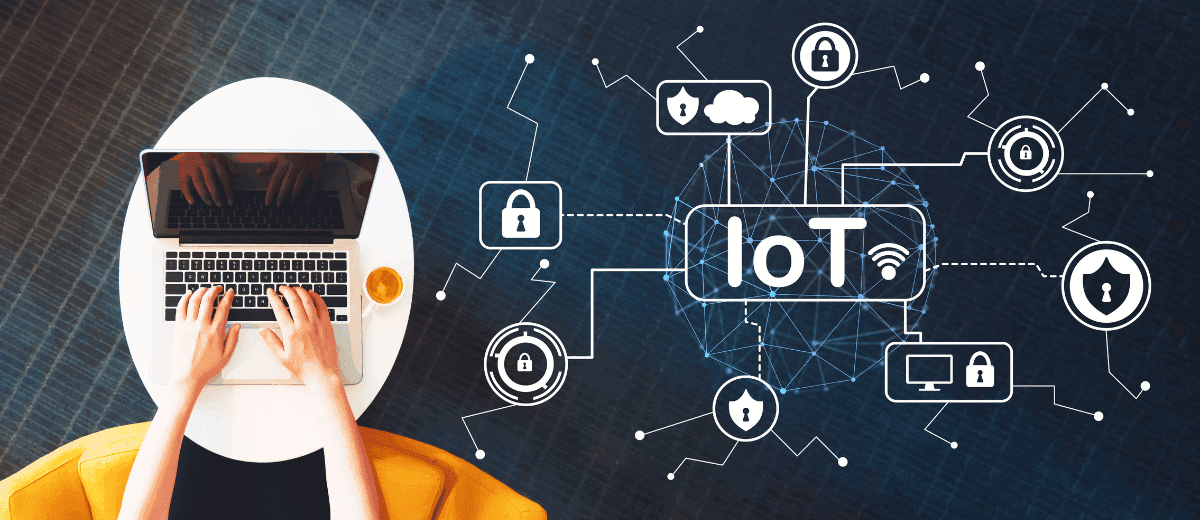- 3rd Apr, 2024
- Nisha D.
A Gentle Introduction to Internet of Things
26th Apr, 2021 | Jay D.
- Internet of Things

Have you ever dreamt of the world where the objects would be doing the work for us without any intervention. The world in which objects collect our data and take care of us. The IoT is a notion of extending the interaction between humans and the Internet to interaction among the objects themselves via the Internet, thus forming an intelligent system.
Imagine your daily routine of a day starting with a bright morning where the shutters open automatically to wake you up along with the triggering of alarm. Till the time you’ve woken up, your coffee maker will start getting your cup ready. The bathroom will take care of the temperature of water for your shower. The jukebox in your living room would start playing the music of your preference while you’re having your morning cup. Moreover, your smart screen would display the important feeds for you.
The fitness screen would display the vital health parameters of your body status along with recommendations, and your day goes on with such countless automation and innovation.
IoT makes this dream come true for us.
- What’re the elements of IoT that make this automation possible?
- Is there any barrier to the technology of IoT?
- What are the parameters to be chosen while sensing a measurement?
- What’re the possible Energy Management scenarios?
- What’re the technological drivers that pushed IoT technology?
- How to manage the inter-connectivity of objects among themselves in a resourceful way?
Let’s try to find the insights to above questions to understand the IoT technology and its core working.
Sensors
- Sensors are the frontend of the IoT system. They are responsible for the data collection from the surrounding environment. Further they convert the measured data into a digital format for the external microcontroller to process.
- Few widely used sensors in IoT application are motion sensors, pressure sensors, temperature sensors, proximity sensors, IR sensors humidity sensors and image sensors etc.
- However, a sensor is not ideal and exhibits a nonlinear relationship between the quantities. The manufacturer specifies the error associated with the sensor in terms of percentage of its full scale output.
- The nonlinearity in a sensor could be possibly due to Hysteresis or Repeatability or a thermal/electrical drift.
- However, sensors just don't rapidly collect or respond to a signal.The time consumed by a sensor is dependent on filtering as well as sampling rate.
- Bandwidth can be defined as the time scale of response of a sensor in terms of delay in reaching the final value.
- Accuracy of a sensor is governed by AC error & noise. The noise limits our detection level of an output. The particular 1/f noise resulting from semiconductor based electronics or Amplifiers etc. can become more significant in our application.
Circuits
-
The typical IoT chip comprises a core microprocessor to run generic programs. Microprocessors require memory management, and for this purpose several hosts of accelerators are provided on a chip for a dedicated task. A port for Analog to Digital conversion as well as Radio Frequency (RF) communication is available on a chip. This microprocessor needs a DC power supply to power it and this is achieved by providing the DC-DC converter on a chip.
-
The critical aspect in these chips is the "Energy Management." The key is to induce a duty cycle in which these transceivers are “mostly” in a sleep state. They are turned “on” typically for a small fraction of milliseconds and then turned “off” for a few seconds or more as per the requirement.
-
The most common alternative to using a battery is energy harvesting through a solar source powered by an additional capacitor in case of any contingency. The 1/f noise associated with the circuits can be diminished by using chopper amplification technique.
Embedded Systems
Embedded system is a computing system designed for a specific application. IoT can be viewed as a MGC architecture :
- ‘M’ stands for e Mbedded devices.
- 'G' stands for Gateway devices which could be any device which provides the interconnection between those low power embedded devices and the internet.
- 'C' refers to Cloud servers which provide the TCP/IP to the Internet and data could be stored in Cloud.
Two game changers in the influence of IoT are "CortexM Microcontrollers" and "Bluetooth Low Energy (BLE)".
The CortexM family is a 32 bit microcontroller using Thumb-1 & Thumb-2 instruction sets. These have powerful features like Memory protection unit, Systick, bit-banding, and memory mapped peripherals etc.
BLE comprises two layers -** Link layer** and Application layer. The link layer employs a star topology, in which a central node can have multiple peripheral devices. The application layer defines the way in which you request & name data on bluetooth device using Generic Attributes(GATT)
Connectivity & Networking
There are various topologies in which a transmitter can interact with the receiver. Usually, there are multiple available Transmitters in a system so we have to handle this Massive Multiple Access. Few techniques include - Reservation Systems, and Random Access systems ( C.S.M.A or Aloha).
The collisions between multiple Transmitters could be embraced by employing the Node Identification followed by Group Testing.
Conclusion
The future of IoT is fascinating, where the billions of things would be communicating with each other, thus making the human intervention as minimal as possible. As each connected device collects the data, the effective indexing of the data is a crucial need. Moreover, there are concerns with data privacy and security, the Blockchain technology could provide an additional layer of security to IoT. The demand of IoT to meet the business solution would continue to expand provided the benefits it offers to the business.
References:
More blogs in "Internet of Things"
- 11th Oct, 2024
- Kinjal D.
Discover the Internet of Things Revolution in UAE
- 10th Jan, 2025
- Rohit M.
IoT in Automobile Industry: A Complete Guide For 2025
Join our Newsletter
Get insights on the latest trends in technology and industry, delivered straight to your inbox.









